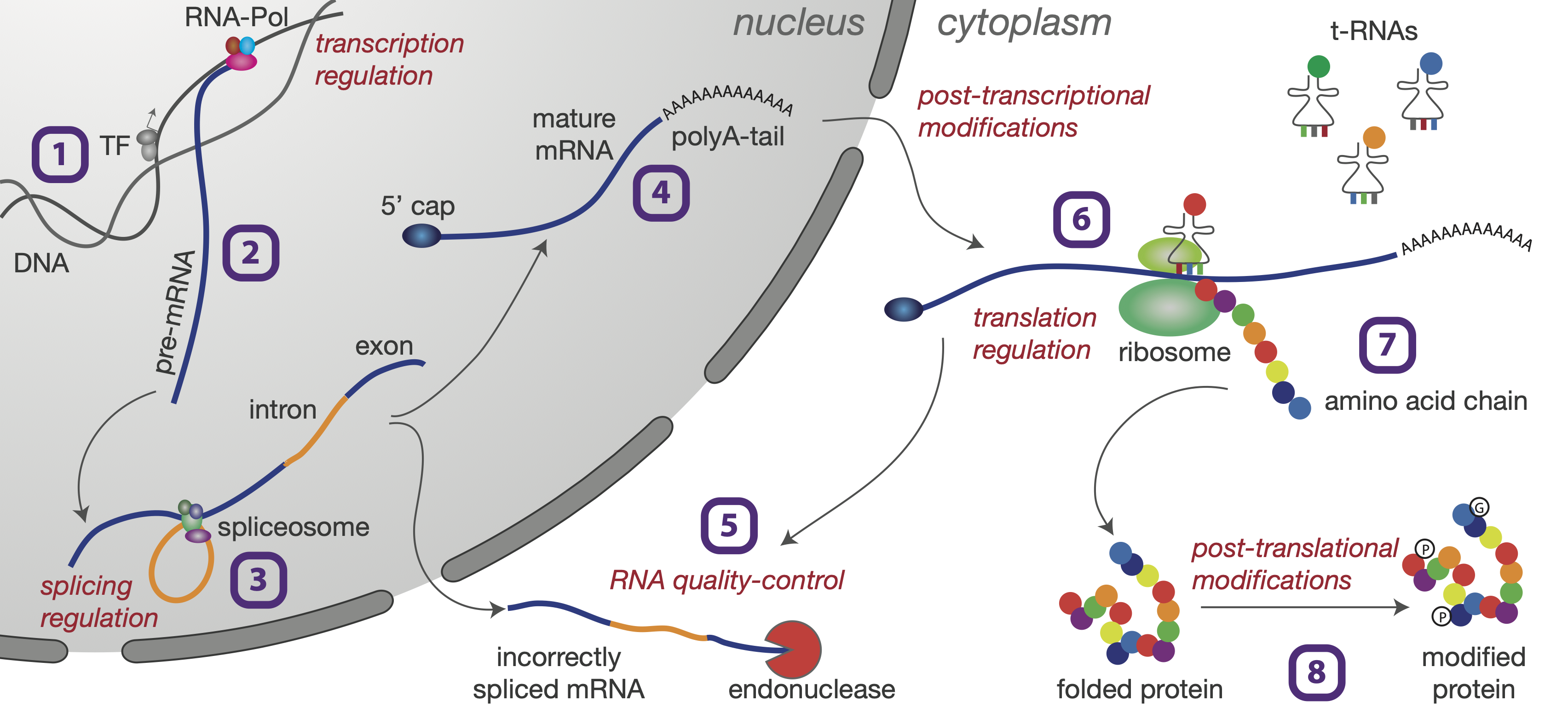Transcription and Translation#
In the following we provide a quick overview of transcription and translation of DNA into RNA into protein within a cell.

This is just a schematic overview, but will motivate the data sources for sequencing data that we will discuss in the lecture.
The genome is located in the nucleus of the cell, where transcription factors (TF) regulate the reading of the reading of the DNA.
RNA polymerases transcribe the matrix strand of DNA int a precursor messenger RNA molecule (pre-mRNA).
Pieces of the pre-mRNA can be cut out and the remaining ones rejoined, in a process called (alternative) splicing.
In a maturation process pre-mRNA is protected from degradation through 5’-capping and 3’-tail polyadenylation.
For further processing, mRNA is transported out of the nucleus into the cytosol and can be further modified or conditionally degraded.
In the process of translation , consecutive base-triplets of mRNA (codons) are recognized through t-RNAs in the ribosome.
Mediated through the ribosome, for each codon in the mRNA, a specific amino acid is added to a continuously forming peptide chain.
Ultimately, the peptide chain folds into a protein that can be further modified through regulatory processed.